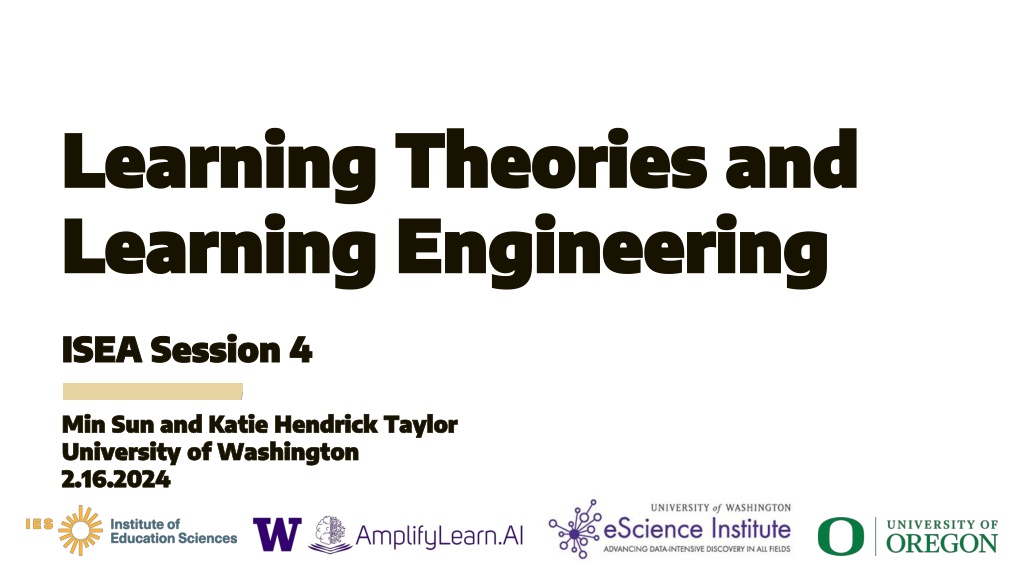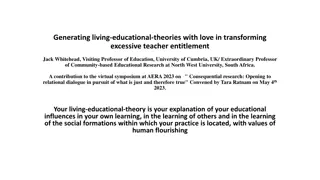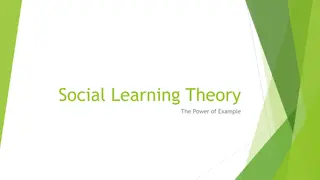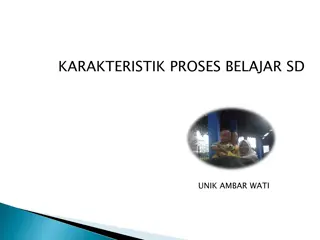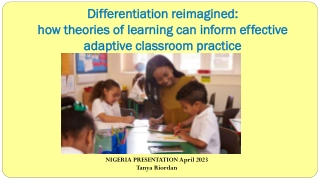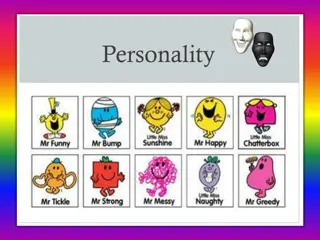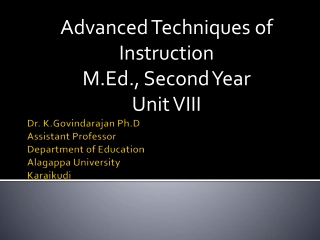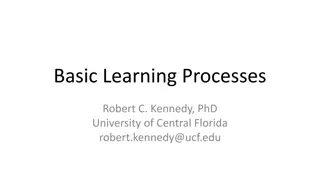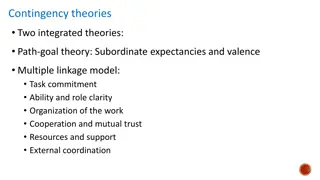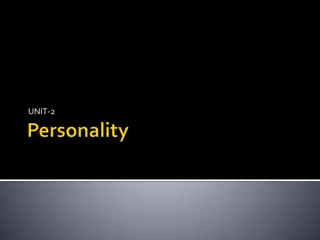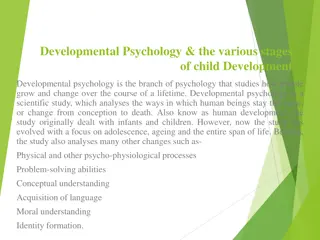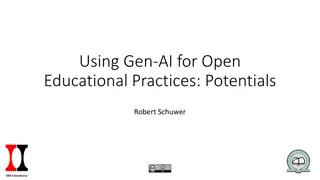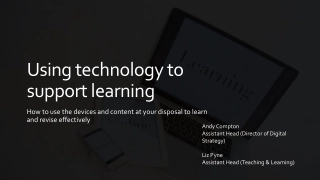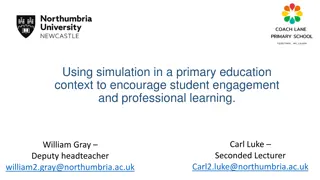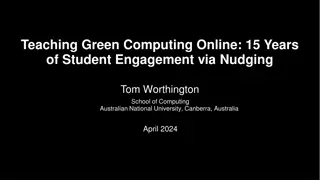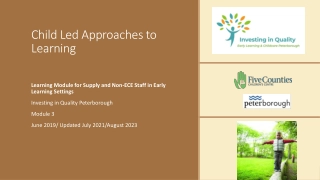Exploring Learning Theories and Nudging Theory in Educational Technology
Today's session at the University of Washington delves into popular learning theories influencing educational technology development, implementation, and evaluation. Dr. Taylor's work focuses on digitally mediated intergenerational learning, while the Educational Software Development Cycle underscores the importance of learning science concepts. Apps and tech solutions like Nudge4 and READY4K! leverage nudging theory components to enhance learning experiences.
Download Presentation
Please find below an Image/Link to download the presentation.
The content on the website is provided AS IS for your information and personal use only. It may not be sold, licensed, or shared on other websites without obtaining consent from the author. Download presentation by click this link. If you encounter any issues during the download, it is possible that the publisher has removed the file from their server.
Presentation Transcript
Learning Theories and Learning Theories and Learning Engineering Learning Engineering ISEA Session 4 ISEA Session 4 Min Sun and Katie Hendrick Taylor Min Sun and Katie Hendrick Taylor University of Washington University of Washington 2.16.2024 2.16.2024
Overview of today Overview of today 1. What are popular learning theories informing ed tech development, implementation, and evaluation? 2. Nudging theory to illustrate
Dr. Taylors Work Dr. Taylor s Work Associate Professor of Learning Sciences and Human Development at UW, focuses on digitally mediated, intergenerational learning, and learning with technology that foreground race, gender, class, culture, and place.
Educational Software Development Cycle Educational Software Development Cycle Planning (Market Research) Learning science concepts can inform each step of this process Implementation , Evaluation, and Updating Analysis (use cases, persona) Testing and integration Design, Prototyping Engineering and Development
Apps/Tech Solution Built on Learning Apps/Tech Solution Built on Learning Science Theories Science Theories > Nudge4 > READY4K! > Colleague > Elinor s Talking to me! Conversational AI into Children s Narrative Science Programming Ask questions stimulates thoughtful responses Feedback continues the conversation around the particular topic Scaffolding helps children better participate
Nudging Theory Key Components Nudging Theory Key Components > Insufficient information The limited information processing capabilities of the human mind. In the face of cognitively demanding tasks such as tasks requiring a substantial amount of choice and continuous, ongoing tasks individuals tend to make choices based on faulty heuristics, or they avoid making decisions altogether (Mullainathan and Thaler 2000). > Limited time, limited attention > Self-control and inconsistency > Hard to see the benefit in the near term
READY4K! READY4K! 2013-14 and 2015-16 school years, Randomized Controlled Trials (RCTs) of the program in SFUSD Between the two years, 1,031 parents and guardians agreed to participate in the study, and a randomly select half to receive the program Each week, parents received three texts about an academic skill or set of skills: Control group: The placebo text to parents in every two weeks, often pertaining to the district s kindergarten enrollment process or required vaccinations > > > >
Examples of the texts Examples of the texts A Fact text designed to inform and motivate parents. FACT: Letters are the building blocks of written language. Children need to know the letters to learn how to read & write. A TIP text that aimed to minimize the cognitive, emotional, and tie burdens of engaged parenting by providing parents with highly specific activities that build on existing family routines; > TIP: Point out the first letter in your child s name in magazines, at the store & on signs. Have your child try. Make it a game. Who can find the most? > GROWTH text, which provides parents with encouragement and reinforcement as well as a follow-up tip > GROWTH: Keep pointing out letters. You re preparing your child 4K! Now when you point out a letter, ask: What sound does it make? > > >
Colleagues Persona Colleague s Persona
Colleagues Nudging Design Colleague s Nudging Design Users Problem Space Users Problem Space > Teachers lack of time or capacity to vet online materials Teachers overreliance on AI-generated content > Technology solution to: Motivate teachers to critically examine the quality of lesson materials and iteratively refine them, YET with small amount of time needed from teachers
Idealization, Prototyping design Idealization, Prototyping design 03 User Study Close study with diverse, representative users Idealization 0 1 Translate User Needs into Functions/Components 0 2 Prototyping them Figma. Low Fidelity Prototype Mid Fidelity Prototype High Fidelity Prototype
Colleagues Nudging Design Colleague s Nudging Design Transitioning to thecolleague.ai
Analysing this design using nudging theory Analysing this design using nudging theory > What can make this design effective? > What would still make this design ineffective?
Analysing the Design using nudging theory Analysing the Design using nudging theory > What can make this design effective? Offer information: Quality measures AI prompt to suggestion possible actions and solutions to address the weakness of the lesson > What would still make this design ineffective? The errors in the quality measures may deter information take-ups Uncertainty to transfer into real actions Doesn t have reinforcement mechanisms
Gen Gen- -AI Prompt Design AI Prompt Design > The AI s role: math teachers > Context: 4th grade math; 60% of students who are multi- language learners; the entire lesson itself as the context > Information: The quality measure that is lacking/insufficient > Action: generate content that addresses the insufficient quality measure and entails high-quality instruction Resources to learn more about prompt engineering: 1. https://www.deeplearning.ai/short-courses/chatgpt-prompt-engineering-for-developers/ 2. https://www.youtube.com/watch?v=dOxUroR57xs&ab_channel=ElvisSaravia
Prompt Design (2 minutes) Prompt Design (2 minutes) Write your own prompt, building on this: > The AI s role: math teachers > Context: 4th grade math; 60% of students who are multi- language learners; the entire lesson itself as the context > Information: The quality measure that is lacking/insufficient > Action: generate content that addresses the insufficient quality measure and entails high-quality instruction
User Testing User Testing Qualitative+Quantitative methods - Cognitive Interviews - Surveys - App tracking user behaviors - Ranking and preferences - A/B testing: on the App or in the software settings - RCTs: in authentic school settings
Theory of Change for Testing and Theory of Change for Testing and Evaluation Evaluation Add: Economic values; Sociential values Citation: Sun, Min, et al. (2024). Colleague.AI s theory of action. Seattle, WA: AmplifyLearn.AI
Assignment Assignment Based on your Week 2&3 s use case and component design, you can choose to: 1. Apply learning science theories (either we introduced today or other ones relevant to your work) to further your user study Or 1. Apply learning science theories to product/algorithm design
Prepare for Next Weeks Session Prepare for Next Week s Session 1. Beef up with your coding skills 2. Set up Colab or python or jupyter notebook
